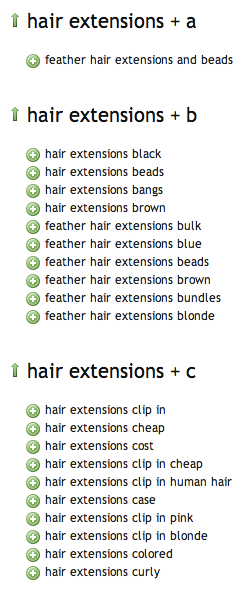Keyword Optimization Strategies for E-Commerce
![]()
Optimizing your e-commerce site with the right keywords is essential to its success. If you blindly launch an e-commerce site without any clear keyword strategy, you’ll have a difficult time climbing the ranks of the search engines, let alone generating sales. But using the right keywords will have the opposite effect, encouraging higher search rankings and more sales.
Short-Tail vs Long-Tail Keywords
Most keywords – when speaking about SEO and digital marketing – fall under one of two different categories: short-tail or long-tail. Short-tail keywords typically consist of either one or two words, whereas long-tail keywords are longer, often consisting of 3 or more words.
So, should you focus your e-commerce site around long-tail or short-tail keywords? While short-tail keywords yield more traffic, they have a few major disadvantages. For starters, short-tail keywords are highly competitive, meaning you’ll have a difficult time ranking your e-commerce site for them. Furthermore, short-tail keywords are less relevant than their long-tail counterpart, resulting in fewer sales/conversions. And according to the folks at SEOMoz, long-tail keywords make up over 70% of all online searches.
Product Names
Consider product names when developing a keyword strategy for your e-commerce site. Specific product names (including model names and numbers) are highly relevant and usually yield a high conversion rate. If a prospect searches for a specific product on Google and stumbles upon your e-commerce site, he or she is likely to buy the product from your site.
Product Names/Titles are are probably the most important onsite seo element for e-commerce and also one of the most commonly neglected. In fact, if you’re thinking about running a Google Shopping campaign, you will find out just how important the title is. According to an article published by SearchEngineLand, titles should be under 70 characters for maximum visibility, including the keywords for which you are trying to display. You can still use more than 70 characters in your Shopping Ads titles, although Google will likely truncate them.
Incorporating Keywords Into Your Site
After identifying some target keywords, you’ll want to incorporate them into your e-commerce site. Try placing your target keywords into your site’s title tag, meta description, and content body. Search engines pay close attention to these elements, using it to determine where and how to rank websites. Just remember to only include keywords when it adds value to your site’s visitors. “Keyword stuffing” could backfire by hurting your site’s search rankings instead of helping them.
Keyword Research
Keyword research is just one step in running a successful e-commerce website. You must also have a clear digital marketing strategy, which may include paid platforms like Facebook Ads and/or Google AdWords.
There are dozens of keyword research tools available online, some of which are free while others are paid. One of the best free tools, however, is Google’s Keyword Planner Tool. Using this tool, you can identify keyword search volume, competition and average bid prices on AdWords.
Another great tool for help with your brainstorming is Übersuggest. Admittedly, I only recently discovered this tool, but am really liking it. Übersuggest scrapes Google for Google suggestion keywords by taking your keyword and adding every letter of the alphabet from A to Z capturing the most frequently searched permutations.

These tips are a great place to begin your E-commerce keyword optimization strategy, but don’t forget to continue to evaluate what terms are bringing in customers that convert. Also, pay attention to your customers as they can often provide great insight into how your site is searched.